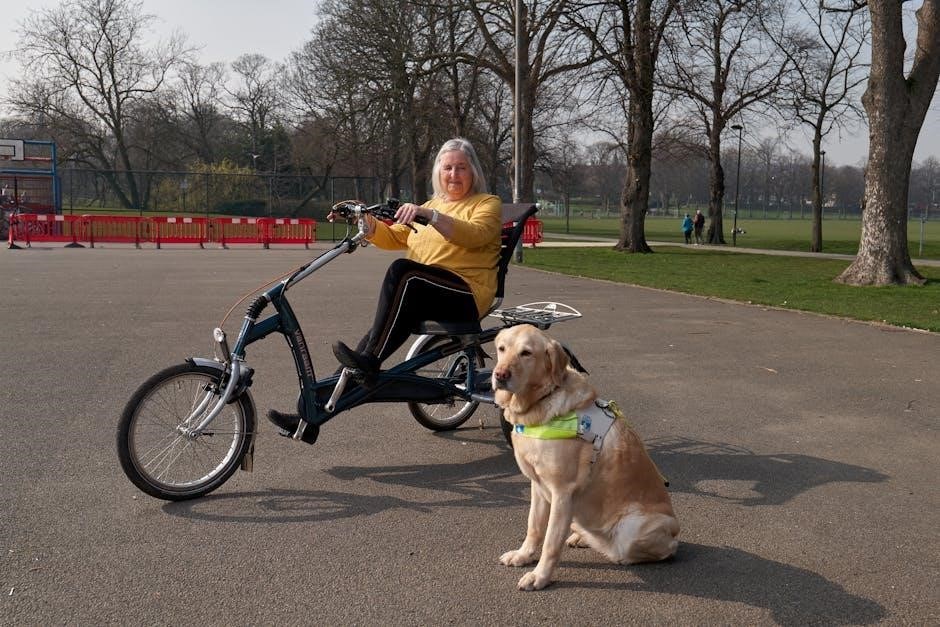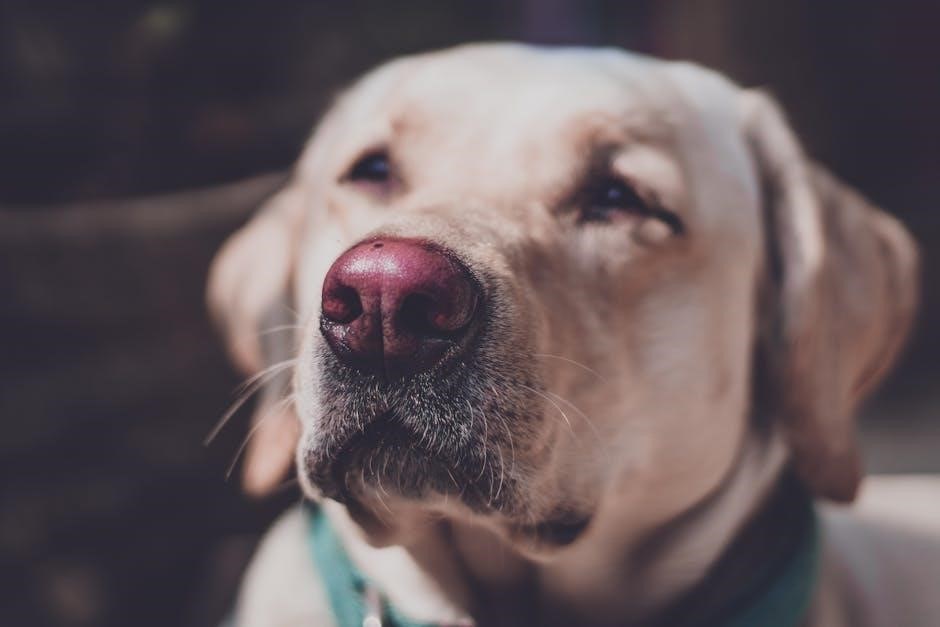A cystotomy is a surgical procedure where the bladder is opened to address issues like stones, tumors, or obstruction. It is a common and effective treatment for urinary problems in dogs, ensuring proper bladder function and relief from symptoms. While it is generally safe, post-operative care is crucial to prevent complications and promote recovery.
What is a Cystotomy?
A cystotomy is a surgical procedure where a veterinarian makes an incision into a dog’s bladder to access its interior. This operation is commonly performed to remove bladder stones, tumors, or other abnormalities causing urinary tract issues. The procedure involves opening the bladder under general anesthesia, allowing the surgeon to visualize and address the problem directly. It is a widely used and effective treatment in veterinary medicine for conditions affecting the lower urinary system.
Why is a Cystotomy Performed in Dogs?
A cystotomy is performed in dogs to address various urinary bladder conditions that cannot be resolved with non-surgical methods. Common reasons include the removal of bladder stones, tumors, or foreign objects causing obstruction. It is also used to repair abnormalities such as ectopic ureters or to treat severe infections. The procedure aims to restore normal urinary function, alleviate pain, and improve the dog’s quality of life by addressing the underlying cause of their urinary issues effectively.

Reasons for a Dog Cystotomy
A cystotomy is performed to address bladder stones, tumors, obstruction, or ectopic ureters. These conditions often cause severe urinary issues, requiring surgical intervention for resolution and relief.
Bladder Stones (Cystic Calculi)
Bladder stones, or cystic calculi, are hard mineral formations that develop in the bladder. They can cause severe pain, urinary obstruction, and infection. Small stones may pass naturally, but larger ones often require surgical removal through a cystotomy. During the procedure, the bladder is opened, and the stones are extracted to restore normal urinary function and prevent further complications. Regular veterinary check-ups are essential to monitor and manage this condition effectively in dogs.
Bladder Tumors
Bladder tumors are abnormal growths that can be benign or malignant. They often cause symptoms like difficult urination, blood in urine, and pain. A cystotomy may be required to remove the tumor, especially if it obstructs the urinary tract or is cancerous. The procedure involves surgically opening the bladder to extract the tumor, which is then biopsied to determine if it is malignant. Post-surgery, further treatment may be needed, and regular monitoring is essential to prevent recurrence and ensure proper healing.
Urinary Tract Obstruction
Urinary tract obstruction is a life-threatening condition where the flow of urine is blocked, often caused by stones, tumors, or debris. A cystotomy is frequently required to relieve the blockage, ensuring proper urine flow and preventing kidney damage. Symptoms include straining to urinate, frequent attempts without success, and blood in urine. Prompt veterinary intervention is critical, as delays can lead to severe complications. The procedure involves surgically removing the obstruction and restoring normal urinary function, followed by post-operative care to ensure recovery.
Ectopic Ureters
Ectopic ureters are a congenital condition where the ureters improperly connect to the bladder, causing urine to flow outside the bladder. This can lead to recurring infections, incontinence, and urinary retention. A cystotomy is often necessary to surgically correct the abnormal connection, ensuring proper urine flow and preventing complications. The procedure involves rerouting the ureters to their correct position, restoring normal urinary function and reducing the risk of infections. Post-operative care is essential to monitor recovery and prevent future issues.

Pre-Surgery Preparation
Pre-surgery preparation involves medical tests like ultrasounds, urinalysis, and bloodwork to assess your dog’s health. Dietary restrictions, such as fasting, are typically required. This ensures your dog is in optimal condition for the procedure and reduces anesthesia risks.
Medical Tests and Evaluations
Medical tests and evaluations are crucial before a cystotomy to ensure your dog is healthy enough for surgery. These include ultrasounds to visualize the bladder and kidneys, urinalysis to check for infections or stones, and bloodwork to assess organ function. Additional tests may involve imaging studies or biopsies if tumors are suspected. These evaluations help identify potential risks and guide surgical planning, ensuring the procedure is as safe and effective as possible for your dog.
Dietary Restrictions
Dietary restrictions are essential before and after a cystotomy to minimize risks and aid recovery. Your veterinarian may recommend withholding food and water for a specified period before surgery to reduce anesthesia risks. Post-surgery, a special diet may be advised to prevent bladder irritation or stone recurrence. Avoiding certain foods that could exacerbate urinary issues is crucial. Always follow your vet’s dietary guidance to ensure your dog’s safe and effective recovery from the procedure.
Preoperative Care and Monitoring
Preoperative care involves thorough medical evaluations, including blood tests and urinalysis, to ensure your dog is healthy for surgery. Your vet may restrict activity to prevent complications. Monitoring focuses on anesthesia risks and overall health. Close observation ensures your dog is stable before the procedure, minimizing surgical risks and ensuring a smooth recovery. Adhering to preoperative instructions is vital for a successful outcome.

The Surgical Procedure
A cystotomy involves a surgical incision into the bladder, often to remove stones or tumors. Performed under anesthesia, it ensures precise intervention for urinary issues, promoting recovery.
Surgical Approach and Techniques
A cystotomy is typically performed via a midline celiotomy or a limited caudal approach, often combined with cystoscopy for precision. The surgeon makes an incision into the bladder, allowing removal of stones, tumors, or obstructive material. The procedure may involve sterile instruments, suction, and forceps to ensure complete extraction. In some cases, minimally invasive techniques are used to reduce recovery time. The goal is to restore proper urinary function while minimizing complications and promoting a smooth recovery for the dog.
Positioning and Anesthesia
Dogs undergoing cystotomy are positioned in dorsal recumbency on a sterile surgical table, ensuring easy access to the abdominal cavity. General anesthesia is administered to prevent pain and movement during the procedure. The patient is closely monitored for vital signs, such as heart rate and oxygen levels, throughout the surgery. Proper positioning and anesthesia are critical to ensure the procedure is performed safely and effectively, minimizing risks and promoting optimal outcomes for the dog.
Intraoperative Care and Monitoring
Intraoperative care during a dog cystotomy involves continuous monitoring of the patient’s vital signs, such as heart rate, blood pressure, and oxygen levels. The anesthesia team ensures the dog remains pain-free and stable throughout the procedure. Surgical instruments and the operating site are carefully managed to maintain sterility and prevent infection. Monitoring also includes observing the surgical site for bleeding and ensuring proper urine drainage. These measures help ensure the surgery is performed safely and effectively, minimizing risks and complications during the operation.

Post-Surgery Care
Post-surgery care for dogs involves monitoring recovery, managing pain, and preventing infection. Activity should be restricted, and owners must follow home care instructions to ensure proper healing.
Immediate Postoperative Monitoring
Immediate postoperative monitoring is critical after a cystotomy to ensure your dog’s recovery. Veterinary teams watch for signs of bleeding, infection, or urinary complications. Your dog may stay hospitalized for 1–2 days to monitor vital signs and pain levels. Monitoring includes frequent checks of the surgical site, urine output, and overall behavior. Any unusual symptoms, such as excessive bleeding or lethargy, should be reported to your vet immediately to address potential issues early.
Pain Management and Recovery
Pain management is essential after a cystotomy to ensure your dog’s comfort and prevent stress. Veterinarians typically prescribe analgesics like ketoprofen or ketorolac to manage postoperative pain. During recovery, monitor your dog’s behavior and watch for signs of discomfort or complications. Restrict activity to avoid disrupting the surgical site, and follow your vet’s instructions for medication and wound care. Proper pain management and rest are key to a smooth and successful recovery.
Home Care Instructions
After a cystotomy, proper home care is crucial for your dog’s recovery. Monitor for signs of complications, such as bleeding, swelling, or discharge from the incision site. Restrict your dog’s activity to prevent strenuous movement, and ensure they avoid jumping or playing. Provide a comfortable, quiet space for rest. Follow dietary recommendations from your vet, and administer prescribed medications as directed. Keep the surgical site clean and dry, and schedule follow-up vet visits to monitor healing and remove sutures if needed.
Possible Complications
Complications of cystotomy in dogs may include infection, bleeding, or wound dehiscence. These issues can lead to prolonged recovery or further health problems if not addressed promptly.
Surgical Site Infection
Surgical site infections (SSIs) are a potential complication of cystotomy in dogs. These infections occur when bacteria contaminate the surgical wound, leading to redness, swelling, or discharge. SSIs can delay healing and require additional treatment, such as antibiotics or further surgery. To minimize risk, veterinarians use sterile techniques and may prescribe preoperative antibiotics. Pet owners should monitor the incision site and contact their vet immediately if signs of infection arise. Prompt treatment is crucial to prevent serious complications and ensure a smooth recovery.
Bleeding and Hemorrhage
Bleeding and hemorrhage are possible complications following a cystotomy in dogs. Mild bleeding may resolve on its own, but excessive blood loss requires immediate veterinary attention. Post-operative hemorrhage can lead to anemia or hypovolemic shock, necessitating blood transfusions or additional surgery. Veterinarians closely monitor patients post-operatively to detect early signs of bleeding. Pet owners should observe their dog’s recovery, watching for pale gums, lethargy, or increased swelling, and seek urgent care if these symptoms appear.
Wound Dehiscence
Wound dehiscence, or the reopening of the surgical incision, is a rare but serious complication after a cystotomy in dogs. It can occur due to excessive strain, infection, or poor healing. Signs include swelling, redness, or discharge at the surgical site. If dehiscence occurs, immediate veterinary attention is crucial to prevent infection and further complications. Pet owners should monitor their dog’s incision site closely and follow post-operative care instructions to minimize this risk.

Recovery and Aftercare
Post-surgery, monitor your dog’s incision site for swelling or discharge, restrict activity, and follow dietary advice to ensure a smooth recovery and prevent complications.
Activity Restriction
After a cystotomy, dogs must avoid strenuous activities like running, jumping, or climbing stairs to prevent complications. Limiting movement helps the bladder heal properly. Supervise your dog at all times, and use a leash during short walks. Avoid playtime that could cause excitement or strain. Mental stimulation through quiet toys or treats can help reduce restlessness. Activity restriction typically lasts a few weeks, as instructed by your veterinarian, to ensure a smooth recovery and prevent wound dehiscence or other issues.
Dietary Adjustments
Following a cystotomy, dietary adjustments are essential to support recovery and prevent future bladder issues. Feed a balanced, veterinarian-recommended diet tailored to your dog’s specific needs. Avoid foods that promote bladder stone formation, such as high-protein or mineral-rich diets. Introduce new foods gradually to prevent digestive upset. Monitor for signs of urinary discomfort, such as straining or blood in urine, and consult your vet immediately if they occur. Proper nutrition aids healing and reduces the risk of complications.
Follow-Up Veterinary Visits
Regular follow-up visits with your veterinarian are crucial after a cystotomy to monitor your dog’s recovery and ensure proper healing. Your vet will assess the surgical site, check for signs of infection, and confirm the resolution of bladder issues. Follow-ups also allow for adjustments to treatment plans, such as pain management or dietary changes. Adhering to these appointments helps prevent complications and ensures your dog returns to optimal health. Consistent monitoring is key to a successful recovery.

When to Consult a Veterinarian
Consult a veterinarian if your dog shows signs of complications, such as infection, excessive bleeding, or unusual behavior post-cystotomy. Monitor for prolonged recovery issues or health concerns, ensuring timely intervention to prevent serious complications.
Signs of Complications
Signs of complications after a cystotomy in dogs may include swelling, redness, or discharge at the surgical site, indicating infection. Excessive bleeding or difficulty urinating should prompt immediate veterinary care. Additionally, lethargy, loss of appetite, or persistent pain may signal underlying issues. Monitoring your dog’s behavior and physical condition post-surgery is crucial to identify these signs early and ensure timely intervention.
Abnormal Recovery
Abnormal recovery after a cystotomy in dogs may include prolonged pain, lethargy, or a lack of appetite. Unexpected swelling or redness around the incision site, along with discharge or a foul odor, could signal infection. Additionally, straining to urinate, blood in urine, or inability to urinate may indicate unresolved or new urinary issues. If your dog’s condition does not improve or worsens, consult your veterinarian immediately to address potential complications.
Concerns About Your Dog’s Health
If your dog shows signs of distress, such as lethargy, loss of appetite, or unusual behavior, it may indicate underlying health issues. Post-cystotomy, concerns like infection, bleeding, or urinary retention can arise. Monitoring for swelling, redness, or discharge at the surgical site is crucial. Additionally, changes in urination patterns or persistent pain should be addressed promptly. Always consult your veterinarian if you notice any unusual symptoms to ensure your dog’s recovery remains on track.
Understanding the Diagnosis
Diagnosing bladder issues in dogs involves urinalysis, ultrasound, and bloodwork to identify stones, infections, or tumors. These tests help determine if a cystotomy is necessary to resolve the condition.
Diagnostic Tests for Bladder Issues
Bladder issues in dogs are diagnosed using urinalysis to detect abnormalities like blood or crystals. Ultrasound imaging helps visualize stones or tumors. Blood tests assess kidney function and overall health. In some cases, radiography or contrast studies may be used to confirm obstructions or stones. These tests guide the decision for surgery, ensuring an accurate diagnosis before proceeding with a cystotomy.
Interpreting Test Results
Test results help identify bladder issues and guide treatment. Urinalysis reveals blood, protein, or crystals, indicating stones or infection. Ultrasound images show stones, tumors, or thickened bladder walls. Blood tests detect kidney dysfunction. Radiographs confirm obstructions. Positive findings for stones or tumors often lead to a recommendation for cystotomy. These results ensure an accurate diagnosis and appropriate surgical planning to address your dog’s specific condition effectively.
Discussing Treatment Options
When discussing treatment options with your veterinarian, they will explain the recommended approach based on your dog’s condition. Cystotomy is often the primary treatment for bladder stones or tumors. Your vet will discuss the surgical procedure, its benefits, and potential risks. Alternative treatments may be explored if surgery isn’t suitable. The conversation will also cover recovery expectations, dietary changes, and any necessary follow-up care to ensure your dog’s comfort and health.
Cost Considerations
The average cost of a cystotomy in dogs ranges from $800 to $2,500, depending on the dog’s size, location, and clinic. Factors like severity of the condition, diagnostic tests, and post-operative care can influence the total cost. Pet insurance may cover part of the expense, and financing options are often available to help manage the financial burden of the procedure.
Average Cost of Cystotomy
The average cost of a cystotomy in dogs typically ranges from $800 to $2,500.
- This includes pre-operative tests, surgery, and post-operative care.
- Factors like the dog’s size, location, and surgical complexity can influence the price.
- In some cases, additional costs for hospitalization or complications may apply.
Pet insurance may cover part of the expense, and financing options are often available to help manage the cost of the procedure.
Factors Influencing Cost
Several factors influence the cost of a cystotomy in dogs.
- Dog size and breed can affect surgical complexity and anesthesia needs.
- Geographic location impacts prices due to varying veterinary charges.
- The surgeon’s expertise and facility type also play a role.
- Additional procedures or complications during surgery may increase costs.
These elements can significantly affect the overall expense, making it essential to consult with your veterinarian for a personalized estimate tailored to your dog’s specific needs.
Insurance and Payment Options
Insurance can significantly impact the cost of a cystotomy. Many pet insurance policies cover surgical procedures like cystotomy, but coverage varies depending on the plan. It’s essential to review your policy to understand what is included. For those without insurance, veterinarians often offer payment plans or financing options. Some clinics also accept third-party financing services to help manage costs. Discussing payment options with your vet beforehand can help ensure affordable care for your dog’s procedure.
